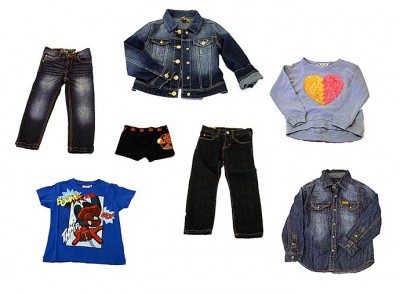Testing conducted by the Norwegian Consumer Council (Forbrukerrådet) found endocrine-disrupting chemicals in children’s clothes from major Scandinavian clothing chains Hennes & Mauritz (H&M), Cubus and Kappahl. The study found potentially harmful chemicals in every third item of clothing tested.

The testing was done ahead of a seminar on protecting consumers against toxic substances, to be held by the Norwegian and Danish councils on Tuesday with support from the Nordic Council, reported newspaper Dagens Næringsliv (DN). The problematic chemicals found included DBP and DEHP. Researchers are concerned the so-called endocrine disruptors may be to blame for rapidly increasing incidences of cancers, fertility issues, damage to fetuses, type 2 Diabetes, obesity and ADHD.
“It is disturbing that every third children’s garment we tested contained substances with properties that could be harmful,” said council director Randi Flesland. “These are substances that should not be found in children’s clothing.”
Both the World Health Organization and UN Environment Program called for stronger regulation of the chemicals last year. The EU has them listed on its candidate register for substances with grounds for great concern, because they can be very harmful to health. Scientists warned the chemicals may have no safe lower limit, and exposure to even very small amounts during vulnerable stages such as during fetal development could result in damage manifesting later in life. The substances are banned in games and products for young children.
The chemical nonylfenoletoxilat (NPEO) was also found in some items, which breaks down to the endocrine disruptor nonylfenol. NPEO is not banned by the EU, but it is limited.
“Children and youths are extra vulnerable to harmful chemicals and are not well enough protected by the current legislation,” Flesland said. “Dangerous substances in everyday products are an increasing problem. It is completely unacceptable that consumers should bear this risk on behalf of the industry. When prominent scientists shout warnings about what endocrine-disrupting substances can do to our health, politicians must wake up.”
Calls for an action plan
“Norwegian authorities must put significantly more pressure on the EU to ban the substances, while the industry must be encouraged to start phasing them out immediately,” argued Flesland.
She called for a non-toxic action plan, modeled on the Swedish and Danish examples. The Swedish government announced last week it would sue the EU Commission to speed up work on phasing out and regulating endocrine-disrupting substances, arguing the commission had run from its duties and given in to pressure from the chemical industry.
“It is high time that our political authorities set endocrine disruptor substances and other everyday chemicals properly on the agenda,” Flesland said. “I would like to quote the Swedish environment minister, when she states that endocrine disruptors are as high on the political agenda in Sweden as climate, because both concern mankind’s future.”
Amounts below acceptable limits
Cubus’ communications manager Julie Bragli Eckhardt said the chain would look at the test results. “Everyone who produces for Cubus is committed to following our chemical requirements, and are required to undertake testing during production to ensure that the finished products do not contain dangerous chemicals,” she told DN in an email.
“H&M’s chemical restrictions have since 1999 voluntarily contained strict restrictions against NPEO,” said press officer Kristin Fjeld. “The restriction is at 100mg/kg.” She said the test results returned levels far below what the chain accepts. “It tells us that NPEO has not been used on purpose, but rather has rubbed off on clothing through contamination. For example, this can happen in machinery or during transport.”
“H&M is a leader in the work against harmful chemicals, and has very strong chemical restrictions, often stronger than a country’s legislation,” Fjeld said. “The consumer council testing shows that we have a system that works when it comes to our chemical restrictions.”
Kappahl also told DN the level found in the testing was far below the proposed maximum limit.
newsinenglish.no/Emily Woodgate

